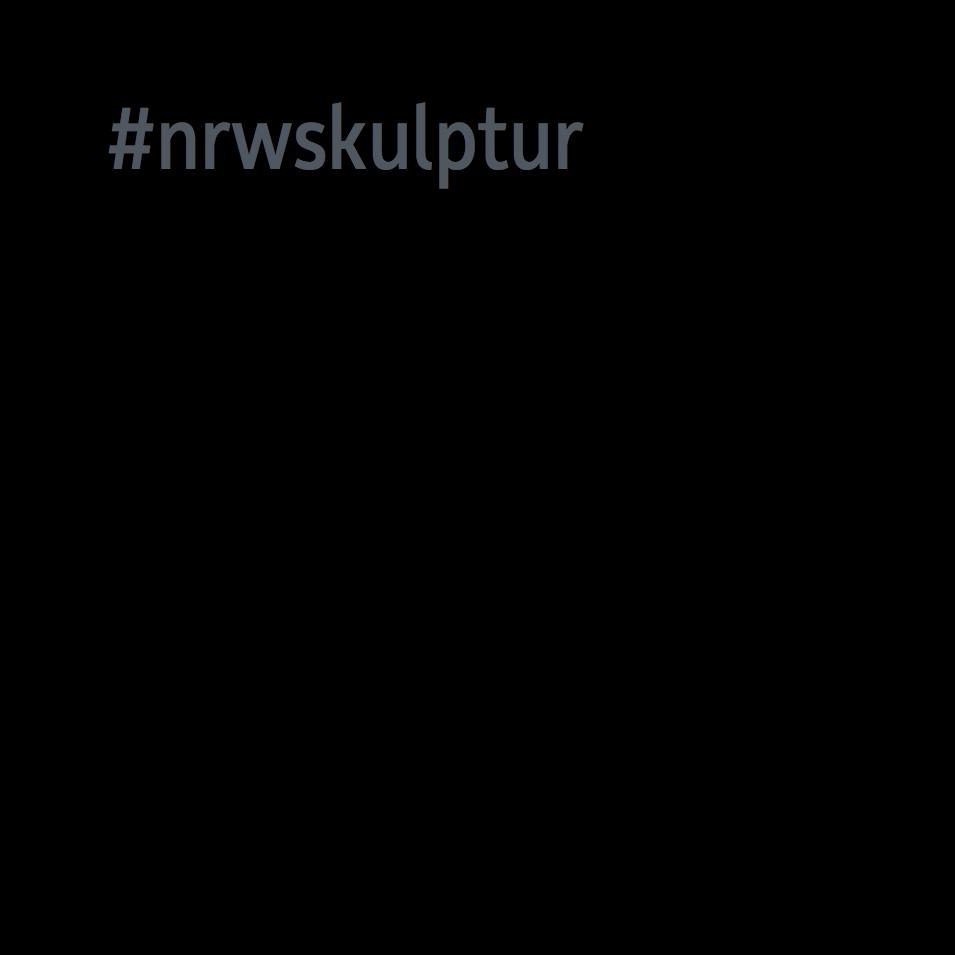Fibonacci Sequence

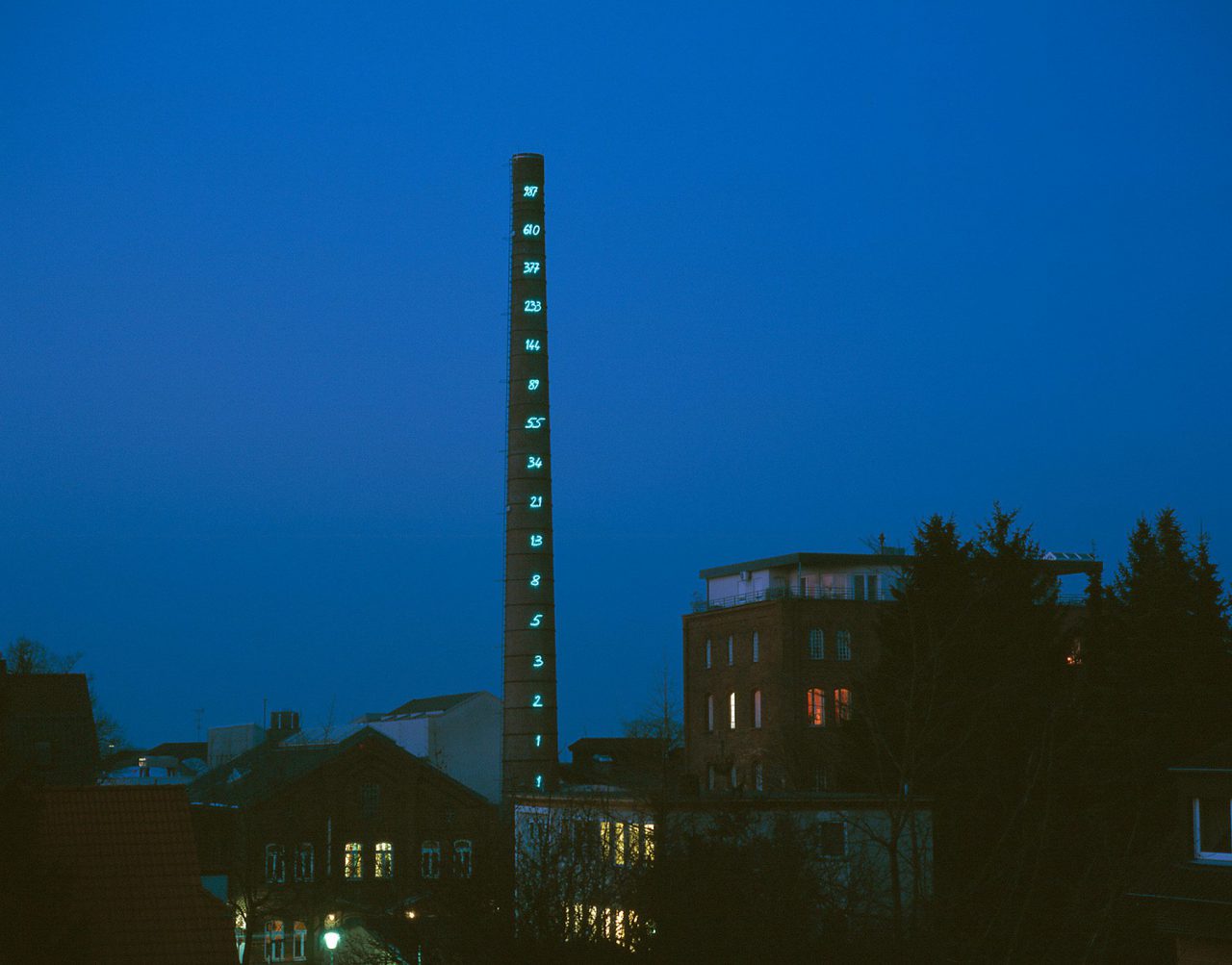
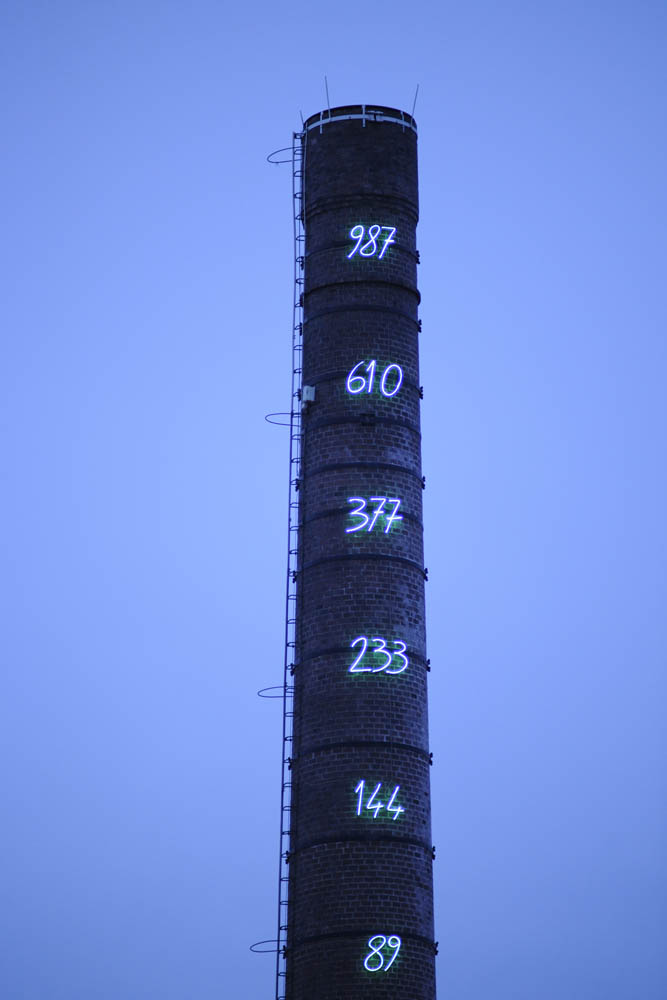
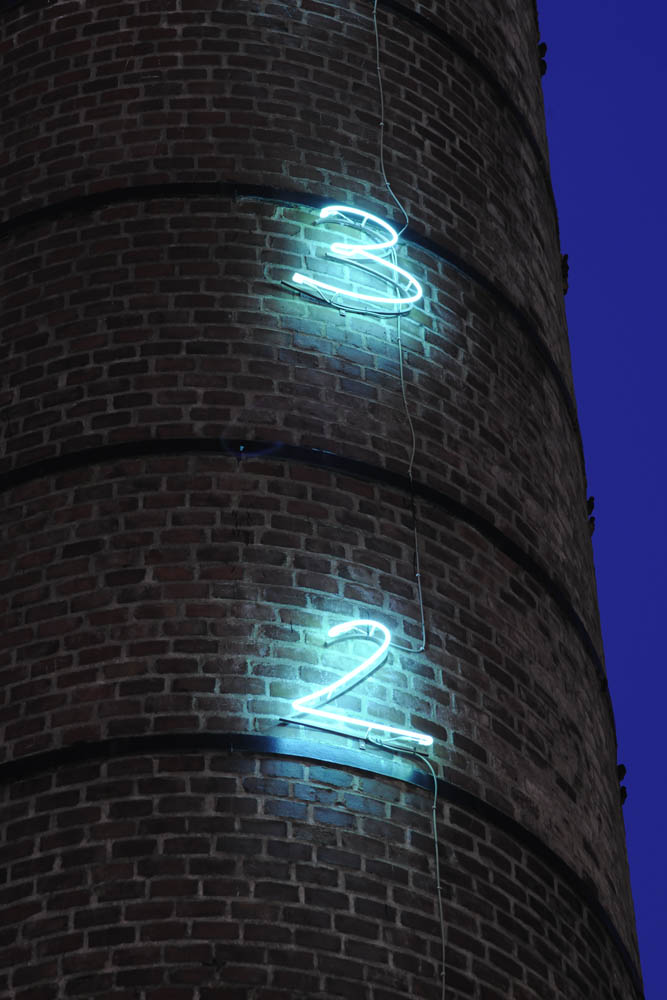
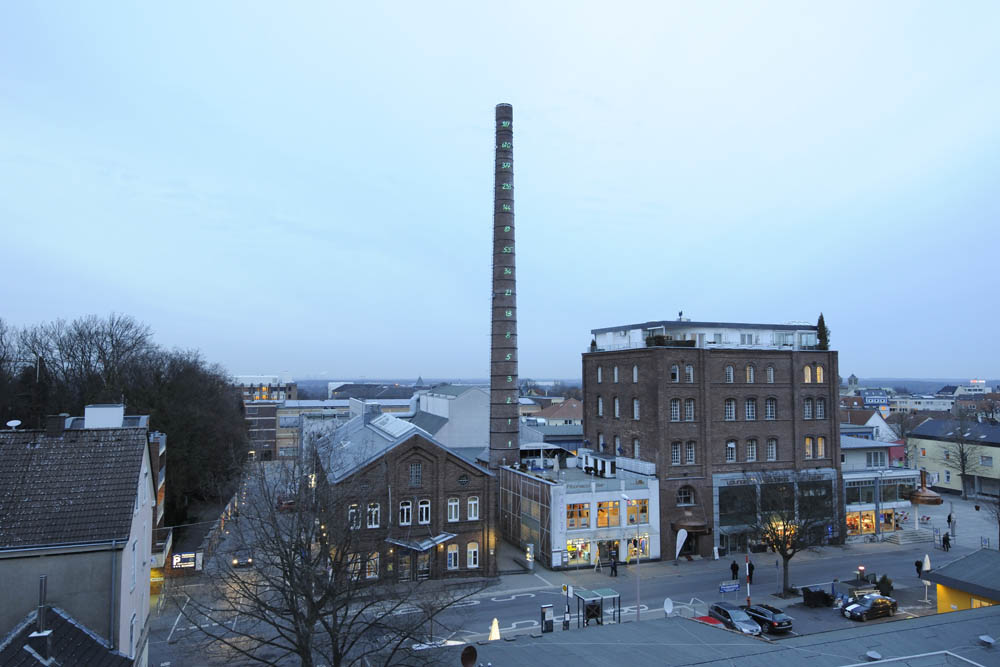
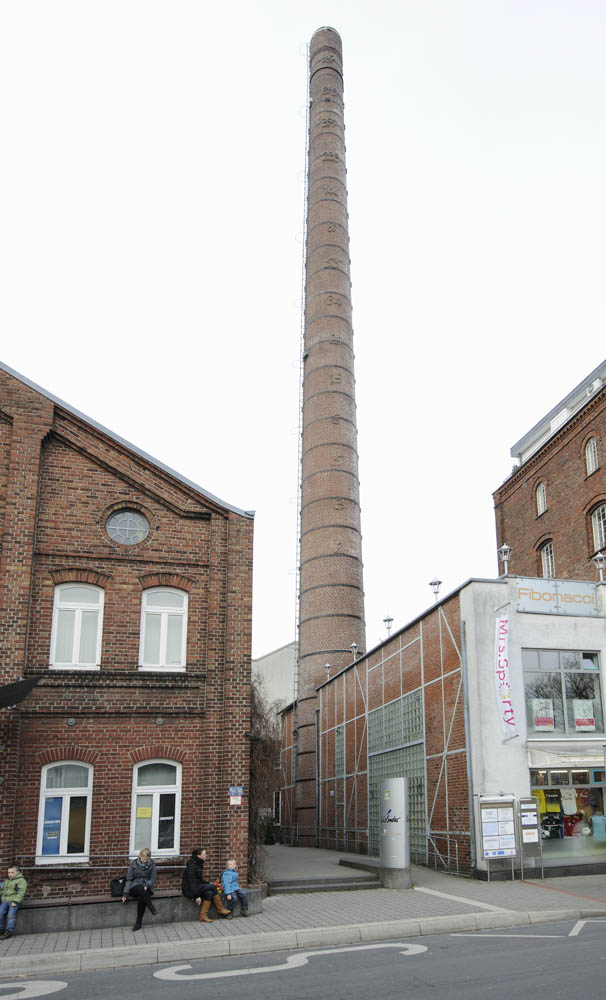
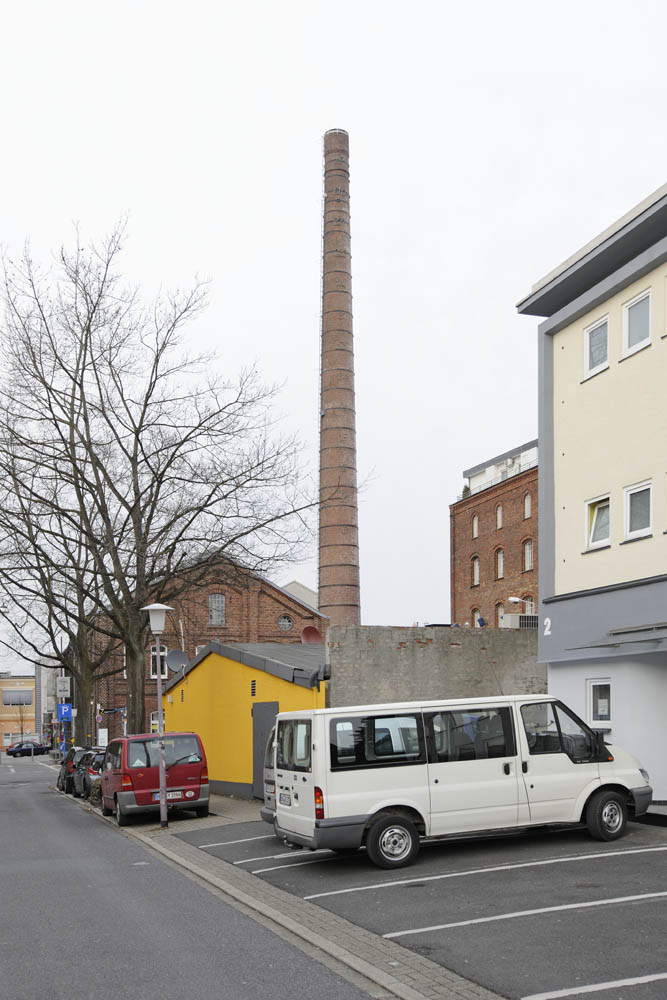
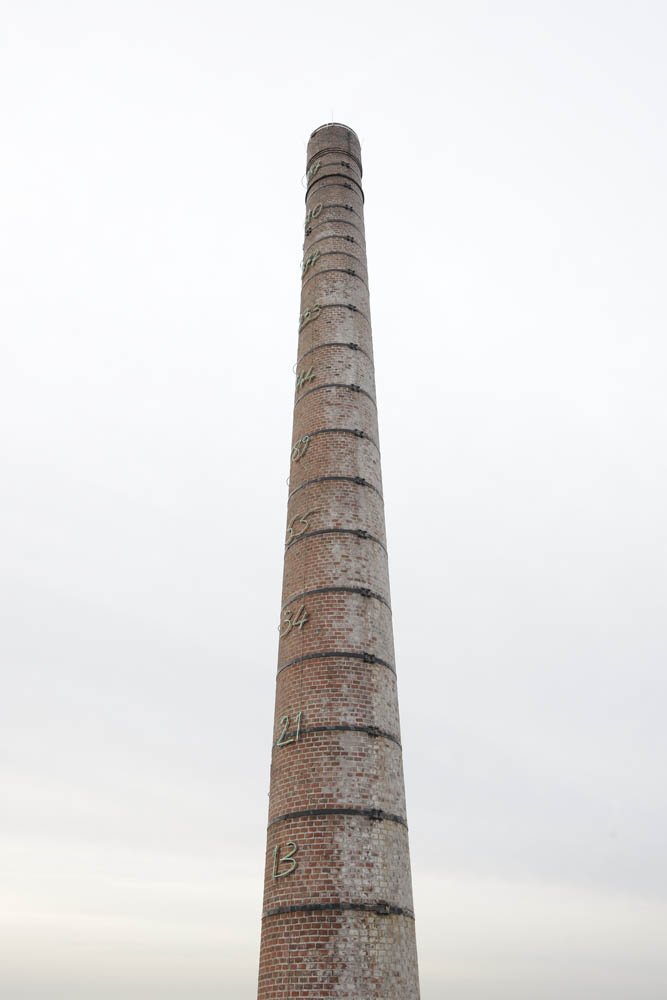


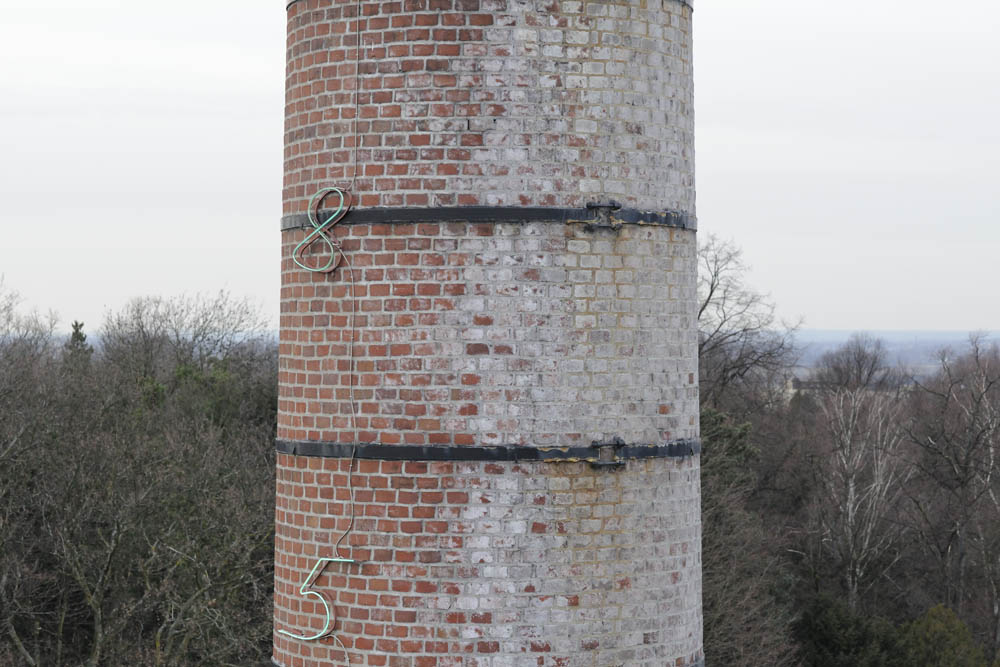
“A tall chimney towers over the cold storage cellars of the old brewery in Unna. Mario Merz had his Fibonacci Sequence mounted along this 52-meter-high landmark that points upward towards the heavens. Returning to them multiple times in his work, Merz has turned the series of numbers into his own artistic symbol. Here, the intention was to create a far-reaching and illuminated sign that pointed to the Zentrum für Internationale Lichtkunst. What better location could there be for this mythical series of numbers from monk and mathematician Leonardo Fibonacci (1170–1240), which Mario Merz has chosen as the embodiment of his symbolic-philosophical art?
The Fibonacci sequence is a progressive series of numbers where a number is equal to the sum of the two numbers before it: 1–1–2–3–5–8–13–21–… Fibonacci studied how quickly rabbits would multiply and his findings led him to a progression which, supported by other research, became a general principle of growth and evolution. Mario Merz summed up the content of the mathematical series in one short sentence: “The principle of proliferation is space and time as one.” He understood life as an expansion into the space and time of subsequent generations. However, growth in these two directions also means development and evolution in the sense that the past, present, and future are interlinked and lead into infinity: “The numbers pour space into an even larger space that is infinite space,” explains Merz and continues: “The numbers pour time into an even longer period of time, which is infinite time.”
The artist has two outdoor installations that incorporate the Fibonacci sequence in the form of neon numbers: In Turin, where they are installed horizontally along the Mole Antonelliana, and here on this chimney in Unna, which rises upwards into the starry sky and points to the infinity of space and time. Here, the progression of sixteen numbers is written in the artist’s own handwriting and mounted to the chimney (55 cm high and attached with a metal frame). It signifies a continuation of the chain of numbers, rhythmically expanding into the eternity of time and space. In addition, the number progression can also be seen as a symbol of the artist’s hope that nature and society will evolve out of a fixed past and imperfect present; in turn, it would progress into a limitless and free future, in which natural and social development are perceived as a unified entity. Once again, the two fundamental starting points of Merz’s work come together: nature and human pursuit are oriented toward completeness – even if the goal, alike the infinity of the sequence of numbers, can never be reached.”
Original German text: Uwe Rüth, Mario Merz. Fibonacci-Reihe, in: Die Sammlung. Zentrum für Internationale Lichtkunst Unna, Cologne 2004, pp. 42-48, here: pp. 45-48
Additional information: www.lichtkunst-unna.de/hauptmenu/sammlung/merz-mario
Mario Merz
← Zur Startseite
Unna, Lindenplatz 1 (chimney of the Zentrum für Internationale Lichtkunst)
